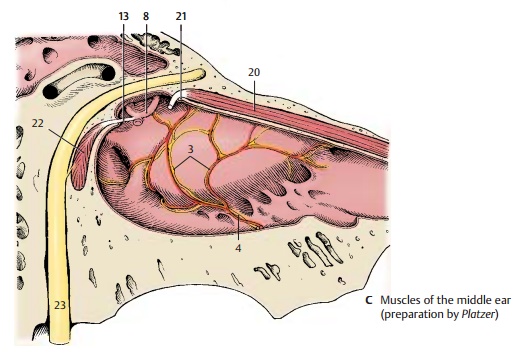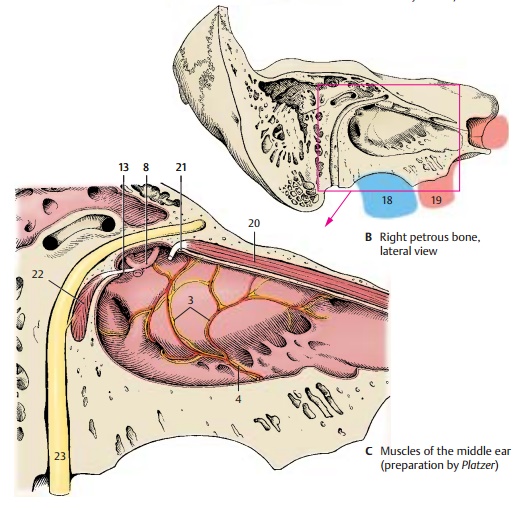Chapter: Human Nervous System and Sensory Organs : The Ear
Muscles of the Tympanic Cavity

Muscles of the Tympanic Cavity
The tensor tympani muscle (C20) origi-nates from the cartilaginous wall of the tympanic tube and from the osseous wall of the canal. Its narrow tendon bends away from the cochleariform process (C21) and in-serts on the manubrium of malleus. The muscle is innervated by the tensor tympaninerve of the mandibular nerve. Thestape-dius muscle (C22) originates in a smallbony canal which usually communicates with the facial canal. Its small tendon passes through the opening of the pyramidal emi-nence and inserts at the head of the stapes. The muscle is innervated by the stapediusnerve of the facial nerve (C23).

The two muscles control the tension of thesound-conducting apparatus. The tensor tym-pani muscle pulls the eardrum inward and pushes the footplate of the stapes into the vestibular window, thus increasing the sen-sitivity of the transmission. The stapedius muscle levers the footplate of the stapes out of the vestibular window and thus dampens the transmission. Hence, the two muscles are antagonists.
Clinical Note: Paralysis of the facial nervecauses loss of function in the stapedius muscle and deficient dampening of sounds; the patients suffer from hyperacusis, an increased sensitivity to sound.
Related Topics